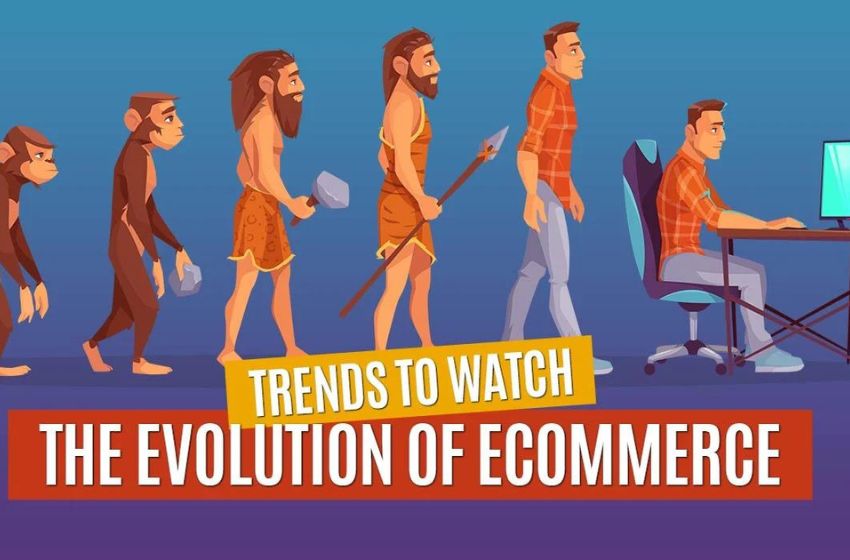The Evolution of eCommerce | Trends to Watch
In recent years, the landscape of eCommerce has undergone significant transformation, fueled by technological advancements, changing consumer behaviors, and shifting market dynamics. As we move further into the digital age, it’s essential for businesses to stay ahead of the curve and adapt to emerging trends in eCommerce to remain competitive in the ever-evolving marketplace. Let’s explore some of the key trends shaping the evolution of eCommerce and what businesses should watch out for in the coming years.
Rise of Mobile Commerce
The proliferation of smartphones and tablets has fundamentally changed the way consumers shop online, giving rise to mobile commerce or m-commerce. With the convenience of shopping on the go, mobile devices have become the preferred choice for many consumers, driving significant growth in mobile eCommerce sales. As a result, businesses must optimize their eCommerce platforms for mobile devices, ensuring seamless and user-friendly experiences across all screen sizes.
Moreover, the integration of mobile payment solutions and digital wallets has further accelerated the adoption of mobile commerce, offering consumers secure and convenient payment options. As mobile devices continue to dominate online shopping behaviors, businesses must prioritize mobile optimization and invest in responsive design to capitalize on the growing opportunities in the mobile eCommerce space.

Personalization and AI-driven Recommendations
Personalization has become a cornerstone of successful eCommerce strategies, allowing businesses to deliver tailored shopping experiences to individual consumers based on their preferences, browsing history, and purchase behavior. With advancements in artificial intelligence (AI) and machine learning, eCommerce platforms can now leverage vast amounts of data to provide personalized product recommendations, targeted promotions, and customized content to users in real-time.
By harnessing the power of AI-driven algorithms, businesses can enhance customer engagement, increase conversion rates, and drive repeat purchases. From personalized product recommendations to dynamic pricing strategies, AI-powered personalization enables businesses to create more meaningful and relevant interactions with their customers, fostering loyalty and long-term relationships.
Expansion of Omnichannel Commerce
Omnichannel commerce has become increasingly prevalent as consumers expect seamless shopping experiences across multiple channels and touchpoints, including online marketplaces, social media platforms, brick-and-mortar stores, and mobile apps. To meet the demands of today’s omnichannel consumers, businesses must adopt a holistic approach to eCommerce that integrates and synchronizes their online and offline sales channels.
By leveraging omnichannel strategies, businesses can create cohesive and consistent brand experiences across all touchpoints, allowing customers to seamlessly transition between different channels during their shopping journey. From click-and-collect options to in-store pickup and return policies, omnichannel commerce empowers businesses to meet customers where they are and provide the flexibility and convenience they crave.
Sustainability and Ethical Commerce
With growing concerns about environmental sustainability and ethical business practices, consumers are increasingly prioritizing sustainability and ethical considerations when making purchasing decisions. As a result, businesses are under pressure to adopt more sustainable and socially responsible practices throughout their eCommerce operations, from sourcing and manufacturing to packaging and shipping.
By embracing sustainable practices such as eco-friendly materials, carbon-neutral shipping, and ethical sourcing, businesses can appeal to environmentally conscious consumers and differentiate themselves in the competitive eCommerce landscape. Moreover, transparent communication and corporate social responsibility initiatives can help build trust and loyalty with consumers who value sustainability and ethical commerce.
Augmented Reality (AR) and Virtual Try-On
Augmented reality (AR) and virtual try-on technologies are revolutionizing the way consumers shop for fashion and beauty products online, allowing them to visualize products in a virtual environment before making a purchase. From trying on clothing and accessories to experimenting with makeup and skincare products, AR and virtual try-on experiences enhance the online shopping experience by providing interactive and immersive features.
By incorporating AR and virtual try-on functionalities into their eCommerce platforms, businesses can reduce returns, increase customer satisfaction, and drive conversions by enabling consumers to make more informed purchasing decisions. As these technologies continue to evolve and become more accessible, businesses across various industries can leverage AR and virtual try-on to enhance the online shopping experience and stay ahead of the competition.

Conclusion
The eCommerce landscape is evolving at a rapid pace, driven by technological innovation, changing consumer preferences, and market dynamics. Businesses must stay abreast of emerging trends in eCommerce and adapt their strategies accordingly to remain competitive in the digital marketplace. From the rise of mobile commerce and AI-driven personalization to the expansion of omnichannel commerce and sustainability initiatives, businesses that embrace these trends will be well-positioned to thrive in the ever-evolving world of eCommerce.




